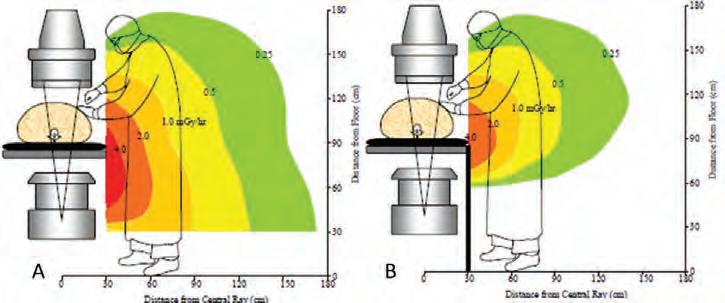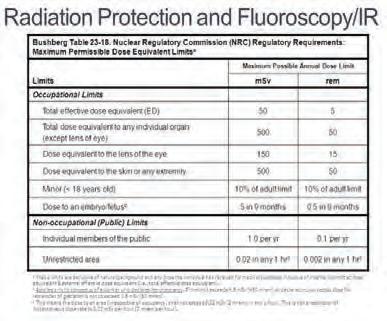
11 minute read
CHAPTER 15 OFFICE-BASED SURGERY IN THE INTERVENTIONAL PAIN PRACTICE
Lawrence F. Kobak, Esq., DPM
I What is Office-Based Surgery?
Advertisement
Office-based surgery includes not only surgery, but also includes diagnostic procedures which involve any kind of penetration of the epidermis, insertion of any foreign material other than medication into the body or insertion of a medical instrument through any natural orifice.
To be under New York OBS regulations, the procedure or surgery must require either moderate or deep sedation or general anesthesia. These procedures include the injection of contrast for MRI or CT when the imaging technique uses either moderate or deep sedation or a major nerve block of any extremity, neuraxial or general anesthesia.
II Define Sedation
1- Minimal sedation does not require the procedure or surgery to be performed in an OBS accredited facility. Minimal sedation procedures are procedures that can be performed with a minimum of pain where the likelihood of complications requiring hospitalization is minimal and procedures performed with local or topical anesthesia. (NY PHL §230-d)
2- Moderate Sedation is defined as “a drug-induced depression of consciousness during which patients respond purposefully to verbal commands, either alone or accompanied by light tactile stimulation. No interventions are required to maintain a patent airway, and spontaneous ventilation is adequate. Cardiovascular function is usually maintained without assistance.” (NY PHL §230-d)
3- Deep sedation is defined as “a drug-induced depression of consciousness during which patients cannot be easily aroused but respond purposefully following repeated or painful stimulation. The ability to independently maintain ventilatory function may be impaired. Patients may require assistance in maintaining a patent airway, and spontaneous ventilation may be inadequate. Cardiovascular function is usually maintained without assistance. (NY PHL §230-d)
4- General Anesthesia is defined as “a drug induced loss of consciousness during which patients are not arousable, even by painful stimulation. The ability to independently maintain ventilatory function is often impaired. Patients often require assistance in maintaining an airway, and positive pressive ventilation may be required because of depressed spontaneous ventilation or drug-induced depression of neuromuscular function. Cardiovascular function may be impaired. (NY PHL §230-d)
5- Neuroaxial anesthesia is defined as “a form of regional anesthesia in which pain sensation is modified or blocked by administration of medication into the epidural space or spinal canal.” NYS DOH OBS FAQ for Practitioners Question #8.
6- Major upper and lower extremity nerve blocks are defined as “types of regional anesthesia in which pain sensation is modified or blocked to a large area of the extremity by the administration of medication around the nerves supplying that region of the extremity.” (NY PHL §230-d)
The level of sedation is dependent on the effects of the medication, not the actual name or dose of the medication chosen.
III What are the limits of the types of procedures that can be performed in an OBS location?
Currently, under New York law, there is no limitation of the type of procedure to be performed per se. It also has no limit as to the length of the procedure or recovery. However, the DOH has recommended that OBS procedures not be longer than six hours. It also advises that if an OBS patient needs to be in recovery more than six hours, that he patient be transferred to a hospital or some higher level of care than an OBS facility.
IV What About MRIs and other imaging studies?
MRIs and any imaging study that use intravenous contrast must be performed in an accredited OBS facility if the patient receives moderate or deep sedation, a major extremity nerve block, neuraxial or general anesthesia.
V What about Botox injections that are sometimes used for various types of pain control?
Generally, as Botox injections are performed under minimal if any sedation, they do not have to be performed in an accredited OBS facility.
VI Who is subject to the OBS Statutes in New York?
Physicians, physician assistants and specialist assistants are subject to the New York State OBS statutes. Podiatrists licensed to perform ankle surgery are subject to these statutes. These statutes do not apply to dentists, podiatrists not performing ankle surgery or any other health care professionals. The NYS Education Department has separate regulations for dentists and podiatrist not performing ankle surgery.
Some dentists are duel degreed; DDS and MD or DMD and MD. When performing procedures within the scope of medicine, these practitioners must follow the OBS statutes in New York.
VII Who Can Accredit Your OBS Facility?
Currently, in New York, three organizations are recognized to accredit an OBS facility. They are:
1- The Joint Commission
One Renaissance Blvd.
Oakbrook Terrace, IL 60181 www.jointcommission.org/ 630-792-5800
2- American Association for Accreditation of Ambulatory Surgery
Facilities (Quad A)
5101 Washington Street, Suite 2F
Gumee, IL 60031 www.aaaasf.org
888-545-5222
3- Accreditation Association for Ambulatory Health Care (Triple A)
5250 Old Orchard Road, Suite 200
Skokie, IL 60077 www.aaahc.org
847-853-6060
Each accrediting agency has its own standards, including periodic re-accreditation. They involve the size and layout of the procedure room(s). Each has its standards for pre-op and patient recovery. Sterilization technique is of the utmost importance. Lighting requirements, emergency lighting and power, and emergency abilities, among many other requirements, all to towards making the office based surgical area a safer place for both the provider and the patient.
VIII Reporting Adverse Events
Pursuant to NY PHL §230-d, adverse events must be reported to the New York State Department of Health, Office of Quality and Safety within three business days. It should be reported either electronically through the Department of Health’s Health Commerce System’s Secure File Transfer utility at user ID obs_smb-Office Based Surgery Shared Mailbox or on paper via certified mail to:
NYS Department of Health
Atten: Office-Based Surgery
Office of Quality and Patient Safety
New York State Department of Health
Corning Tower, Room 1938
Albany, NY 12237
The physician, PA, specialist assistant or podiatrist directly involved in the OBS procedure that generated the reportable event must report it to the DOH within 72 hours of the event’s occurrence, regardless of the level of anesthesia.
While nurses, x-ray technologists, physical therapists, medical assistants and others need not report an adverse event, if these people were present, their respective names, and licensure status should be part of the report to the Department of Health.
A list of reportable events is repeated here verbatim:
1 Patient death within thirty (30) days;
2 Unplanned transfer to a hospital or emergency department visit within seventy-two (72) hours of office-based surgery for reasons related to the office-based surgery encounter;
3 Unscheduled hospital admission or assignment to observation within seventy-two (72) hours of office-based surgery for reasons related to the office-based surgery encounter;
4 Unscheduled hospital admission or assignment to observation within seventy-two (72) hours of the office-based surgery, for longer than twenty-four (24) hours;
5 Any suspected health care transmission of a bloodborne pathogen (BBP); a suspected transmission of a bloodborne pathogen (BBP) from a healthcare professional to a patient or between patients originating in an OBS practice as a result of improper infection control practices. BBP includes but are not limited to: Hepatitis B virus, Hepatitis C virus and Human Immunodeficiency Virus. BBP reporting must occur within three business days of becoming aware of a suspected transmission.
6 Any other serious or life-threatening events- which include: a. Surgery or invasive procedure performed on the incorrect site or incorrect person; b. Incorrect surgery or invasive procedure performed on a patient; c. Unintended retention of a foreign object after surgery or invasive procedure; d. Patient death or serious injury associated with
1. The used contaminated drugs, devices or biologics provided by the OBS office;
2. Use or function of a device in patient care in which the device is used or functions other than as intended;
3. A medication error (e.g. wrong drug, dose, patient, time, rate, preparation or route.);
4. Unsafe administration of blood products;
5. A fall while being cared for in an OBS setting;
6. Irretrievable loss of an irreplaceable biological specimen;
7. Failure to follow-up or communicate laboratory, pathology or radiology test results;
8. An electric shock in the course of a patient care process in an OBS setting;
9. Burn incurred from any source in the course of a patient care process in an OBS setting;
10. Intravascular air embolism occurring while being cared for in the OBS office;
11. Use of physical restraints or side rails while being cared for in an OBS setting;
12. Introduction of a metallic object into the MRI area
13. Patient elopement;
14. Physical assault (i.e. battery) that occurs within or on the grounds of an OBS practice; e. Any incident in which systems designated for oxygen or other gas to be delivered to a patient contains no gas, the wrong gas or are contaminated by toxic substances; f. Artificial insemination with the wrong donor sperm or egg; g. Patient suicide, attempted suicide or self-harm that results in serious injury while being cared for in an OBS setting; h. Sexual abuse/assault on a patient within or on the grounds of an OBS practice; i. Abduction of a patient of any age; j. Any instance of care ordered or provided by someone impersonating a physician, nurse or other licensed healthcare provider. k. Unplanned return to the OR after discharge from an OBS office for a procedure related to the OBS procedure; l. Assignment of a patient to an observation status in a hospital for a period of up to 72 hours after undergoing on OBS procedure(s); m. Delayed admission to the hospital for actual or potential OBS related complications occurring between 73 hours and 30 days after an OBS procedure.
For purposes of OBS practices, “serious injury” is defined as a loss of a body part, disability or loss of bodily function lasting more than seven days or still present at the time of discharge from an inpatient healthcare facility.
IX Confidentiality
Reports of adverse events are not subject to Freedom of Information Act requests and are considered confidential pursuant to PHL §2998e.
X Reimbursement
Private insurers are not required to pay a facility fee for accredited OBS facilities. Neither Medicare or Medicaid pay a facility fay for accredited OBS facilities.
Chapter 16
Radiation Safety And Interventional Pain
David Gasalberti MD, Richard A. Gasalberti MD, Isaac J. Kreizman MD
Overview
There are a myriad of radiation delivery devices utilized for both diagnostic and therapeutic purposes. Adequate training of providers and staff in the safe use of this equipment are mandated to protect patients and providers alike. “As Low as Reasonable Achievable” (ALARA) is the guiding principle of radiation safety. It acknowledges not only the need to minimize risks to the patients and providers but also the logistical and economic considerations of radiation protection. Radiation exposure is quantified in units of Roentgen Equivalent Man (Rem) or Sieverts (Sv). The consequences of radiation exposure can be divided into early and late effects. At the energies used for diagnostic purposes, the primary early effect is skin injury. Late effects consist of development of malignancy, cataracts, and birth defects. These effects can also be divided into stochastic and deterministic effects. With stochastic effects such as the development of malignancy, there is no “safe” dose and all exposure carries a probability of manifesting disease. Deterministic effects such as the development of cataracts tend to have a threshold dose below which there is no risk. The above principles represent the basis for thinking about radiation exposure and the associated risks.
The Nuclear Regulatory Commission (NRC) controls the exposure limits for workers and the general public (Table. 1)1. The general public may receive a total effective dose equivalent of 0.1 Rem/year while occupational exposures may reach 5 Rem/year. Any worker who is anticipated to receive >10% of the annual dose limit, minors (<18y/o) who may receive 10% of the annual limit, or workers entering high or very high radiation areas must have periodic exposure monitoring. Female personnel that are pregnant must declare their pregnancy in writing before being subject to the stricter embryo/fetal guidelines. Measurement of exposure is accomplished with badges that are worn regularly by personnel. These badges may be composed of film or other materials such as lithium flouride which can store information about cumulative exposure to allow tracking over time. If a worker exceeds a permitted exposure, then remedial actions such as evaluating procedure, safeguards, and devices in use should be undertaken. The most effective means of reducing exposure usually fall into 3 categories: time, distance, and shielding. Reducing the length of exposure time will obviously lead to less cumulative exposure for providers and patients. For distance, the inverse square law dictates that a specified intensity is inversely proportional to the square of the distance from the source of the physical quantity.
Therefore by increasing the distance between a worker and the radiation source, the exposure can be significantly reduced. Shielding personnel through the use of lead garments such as aprons or lead lined walls can also limit the intensity of exposure. While the specific regulations regarding construction, shielding, and quality assurance for radiation devices may differ, the basic principles and exposure limitations employed to protect patients and their providers remain constant.
Table 1. Nuclear Regulatory Commission’s Maximum Permissible Dose Equivalent Limits for workers and the general public1

Radiation Safety for Fluoroscopically Imaged Guided Interventions

Many interventional pain procedures performed require the use of fluoroscopic guidance. There are specific regulations regarding these devices and certain procedures that can be undertaken by the operator to reduce their exposure. X-ray devices including fluoroscopes are primarily regulated at the state level and therefore the requirements regarding operation, maintenance, and certification will vary. However, the AAPM and the Conference of Radiation Control Program Directors (CRCPD) have proposed policies regarding implementation of competency requirements and training for operators as well as exposure limits respectively.
There are several procedures that can help reduce occupational exposure. Minimizing beam-on time with short taps of the fluoro rather than continuous operation will obviously reduce exposure. Fluoro-on-time warnings can also make operators cognizant of the total fluoroscopy time. Last-image-hold, when a prior image can be stored and evaluated in the room, can reduce the need for repeat imaging. The operator’s position will also influence the amount of exposure received during an intervention. Operators standing by the x-ray tube during fluoroscopy will receive much higher exposure than those standing on the opposite side (Fig. 1)3. Collimation to the area of inter- est can reduce skin exposure as well as scatter radiation. In addition to collimation, optimizing the geometric arrangement of x-ray tube and image intensifier can reduce scatter, reduce patient skin exposure, and improve spatial resolution. Ideally, the image intensifier will be closer to the patient than the x-ray tube. The distance between the operator and the fluoroscope can be increased through the use of injection or compression devices. Movable shielding devices such as under-table or ceiling shields can also reduce exposure for operators through attenuation of the beam (Fig. 2)3. Personal shielding devices are also very important in reducing dose and can be placed on both the operator and the patient. These usually consist of an apron made of 0.5mm thick lead or other materials with the same lead equivalent thickness. Lead aprons can attenuate scattered x-rays by a 95%2. A thyroid collar and protective eyewear are also encouraged particularly if a worker has a documented exposure of >4mSv2. Lead shielded gloves may also be useful especially for attenuating scattered radiation but they are of minimal benefit if hands are placed in the primary beam. Specially designed maternity aprons are also available for pregnant personnel.
Table 2 lists typical personnel exposure rates with and without shielding taken from The American Association of Physicists in Medicine (AAPM) Report #582.

Equipment and room design should be optimized to allow for minimal exposure to patients and personnel while maintaining image quality. Structural shielding of rooms should be considered in areas where C-arm fluoroscopes are used regularly. Audiovisual equipment may also be used minimize the time a worker needs to be in the room exposed to radiation or can eliminate that possibility altogether. Low dose fluoroscopy with pulsed exposure, beam filtration, or video frame averaging will also reduce the need for additional exposure3. Several mechanisms are in place to ensure radiation exposure and the associated risks remain minimal while maintaining high quality care and image resolution. The basic principles of time, distance, and shielding to reduce exposure have been implemented across several areas including personnel procedures, training, equipment design, and room design. Although the risks of late complications may never reach zero, successful radiology and radiation therapy programs continually re-evaluate their practices by collaborating with their clinicians, physicists, radiation safety officers, and technicians to improve safety and reduce risks of exposure.




